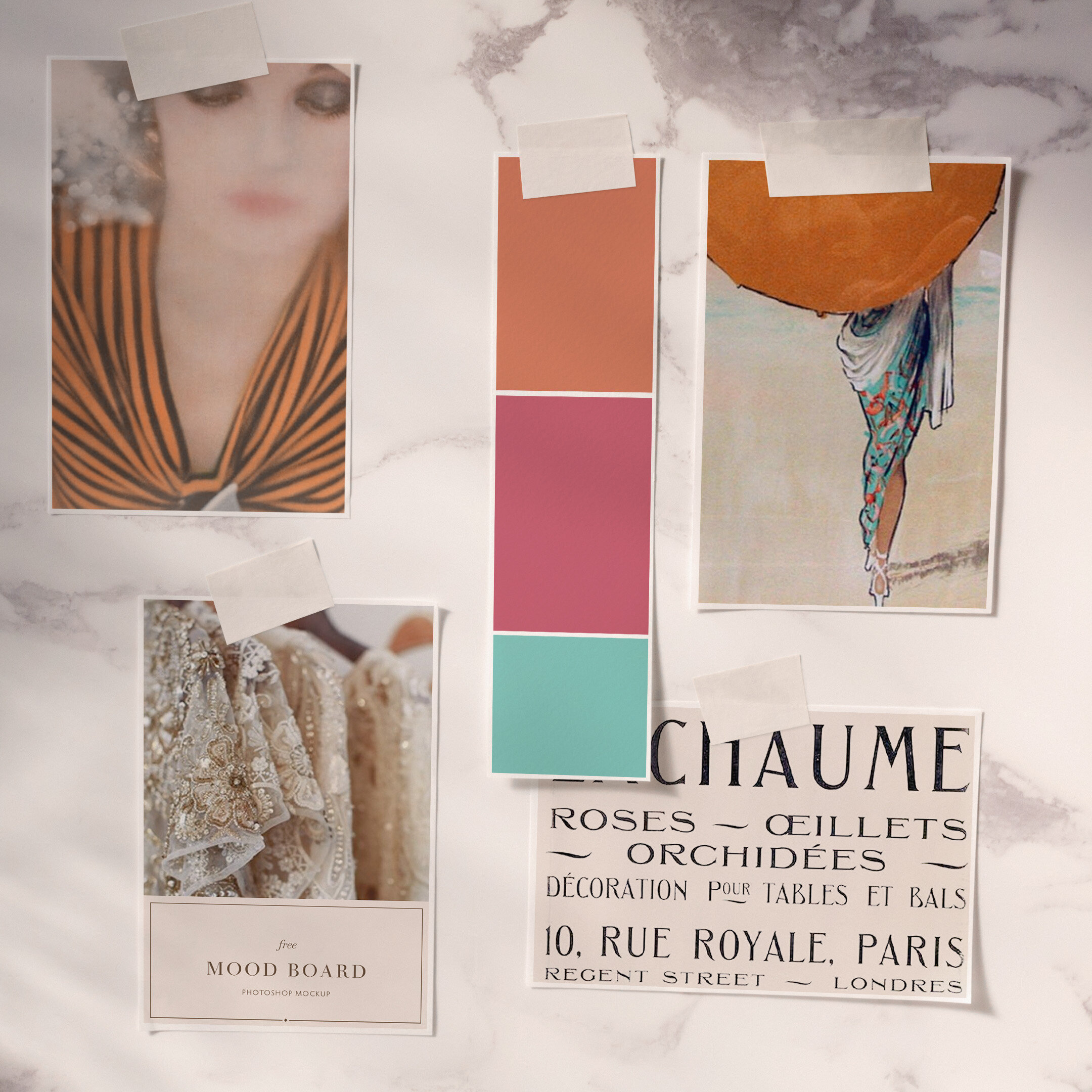Designers use mood boards in different ways and have different methods of creating them. Here at Mango Tree Studio, I think about what I’d like the audience to feel, and the overall style, tone of voice, and creative direction of the project. All of which is to say, a mood board sits very much within the context of the research and strategy and, along with making sure we’re on the same page, is a springboard for developing ideas. Before creating a mood board, I pull together the information from the creative strategy which gives me a direction to start collecting inspiration. Inspiration can include photography, typography, textures, colours, and anything else which resonates with the brand.
the theme evokes a romantic, laid-back glamour in touch with the natural world and with an affinity for vintage style, subtle textures, and loose patterns
(credits unknown)
For projects, I usually use digital mood boards and for Instagram I might use a more tactile mood board as it more typically suits the medium. I’ll start collecting inspiration, often using Pinterest, until I reach a point where I’m ready to start narrowing it down. This is an excerpt of a mood board that evolved from the research of a photography brand for an audience of creative working women in their thirties. The brand exuded adventure, idealism, and generosity of spirit, and the style was to infuse romantic, laid-back glamour in touch with the natural world with a vintage-inspired mood, subtle textures, and loose patterns.
Leading on from this, there are a few things to remember when you’re reading a mood board. Visual language is often figurative rather than literal and what you’re looking for is the overall mood of the project. How does it make you feel? Does it all tie together? Are the colours warm or cool? What energy do they elicit? Go back to what you know about your ideal client and ask yourself why the underlying theme, style, and feelings evoked by this mood board would appeal to them. These are the kind of questions you can ask yourself to inform the feedback process of the creative strategy.



